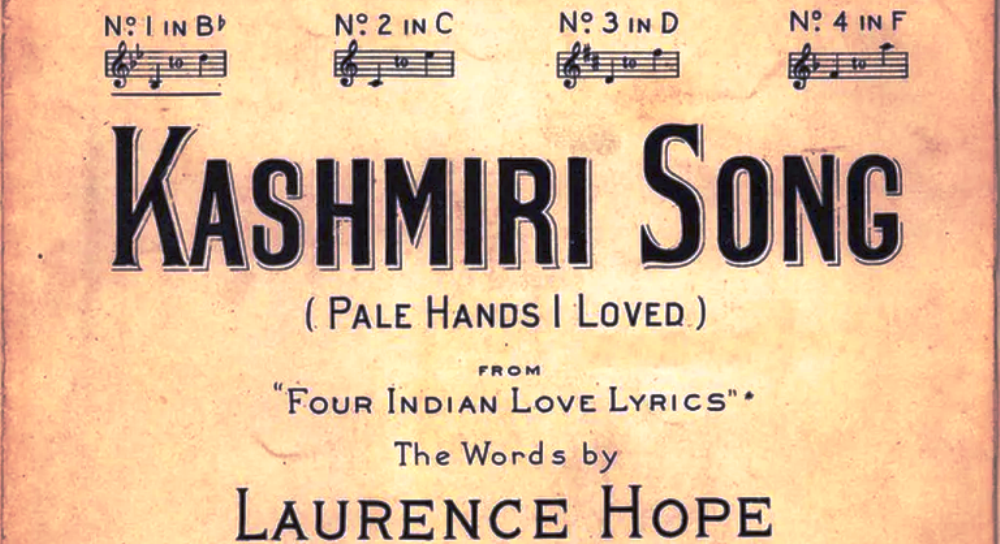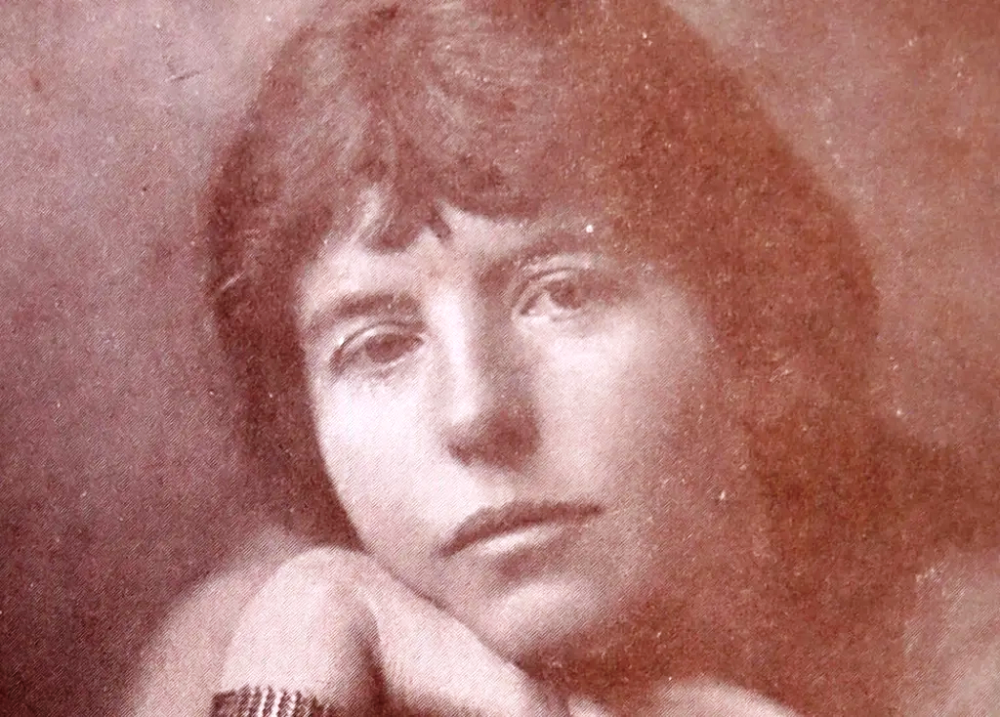by Nayeem Showkat
The Kashmiri Song serves not only as a historical artefact but also as a musical canvas through which the marginalized voices of Indo-British colonial history find expression.

Violet Nicolson, also known as Adela Florence Nicolson, an esteemed yet often overlooked poet, arrived in India during the colonial era at the age of 16 to reunite with her father. Born in 1865, the same year as Rudyard Kipling, Adela was the daughter of Colonel Cory, an officer in the British Indian Army who served as the editor of the Civil and Military Gazette in Lahore. Following Cory’s departure, Kipling assumed editorial duties at the newspaper.
Meanwhile, Colonel Cory took up the editorship at the Sind Gazette, where Adela assisted him due to her adeptness in Hindi and Urdu. In 1889, she wed Colonel Malcolm Nicolson of the Bombay Army. Tragically, two months after his demise in 1904, she took her own life.
Writing under the pseudonym Laurence Hope, Adela delved into themes of love, longing, suffering, and death. Her collection The Garden of Kama (1901), also known as India’s Love Lyrics, stands as one of her most lauded works.
Notably, several of her poems centred on Kashmir gained widespread popularity in the West at the outset of the 20th century. Among these, is the Kashmiri Song by Juma, with its poignant lines:
You never loved me
and yet to save me,
and
Pale hands I loved,
Beside the Shalimar
emerged as a particularly celebrated piece from The Garden of Kama.

Adela’s poetry gained renewed vitality and widespread acclaim following Amelia Rowe Ward’s musical rendition of “Kashmiri Song,” specifically Pale Hands I Loved, Beside the Shalimar, in 1902. Andrew Whitehead notes that the term “pale” alludes to the fair complexion commonly associated with Kashmiris.
Amelia Ward’s adaptation came about during her residency in India in the 1890s, during which she spent three years, including a visit to Kashmir. Four years later, she wed Lieutenant-Colonel Woodforde-Finden, assuming the name Amy Woodforde-Finden.
Within her composition Four Indian Love Lyrics, Kashmiri Song emerged as the standout piece, swiftly capturing the hearts of audiences, and enduring as a beloved standard until the outbreak of the Second World War. It gained rapid popularity in European cafes, particularly during the interwar period.
Adela selected the Four Poems by Hope, purportedly inspired by erotic literature such as the Kama Sutra by Vatsyayana and The Perfumed Garden of Sensual Delight by Muhammad ibn Muhammad al-Nafzawi. Yet, some historical records suggest that these works may have originated from Hope’s pen.
In 1901, Amelia Ward crafted Four Indian Love Lyrics upon her return to England, infused with the melodies of the East. Initially met with publisher reluctance, Kashmiri Song saw self-publication in 1902. However, due to its overwhelming popularity and the advocacy of Hamilton Earle, it was later published by Boosey & Co. Riding the wave of success from Kashmiri Song, Ward continued her composition endeavours, penning On Jhelum River in 1906 among others.
These songs gained considerable prominence, so much so that a British film titled The Indian Love Lyrics was produced, adapting the song cycle based on the narrative of the Mughal Kingdom in India. This collaborative effort between Western filmmakers, artists, and writers incorporated Eastern stories, writings, and characters, primarily set in Kashmir.
In 1923, the prominent film magazine Pictures and the Picturegoer expressed anticipation regarding the film adaptation, noting the widespread popularity and acclaim of the Four Indian Love Lyrics. The poems serving as the lyrical basis were drawn from a collection of eighty-four, originally published under the title The Garden of Kama.
The 1923 British silent romantic drama film, based on the well-known song cycle, unfolds an Eastern narrative of court intrigue and romance. Directed by Sinclair Hill, the film’s synopsis portrays it as the ‘story of a princess in India who disguises herself as a commoner to evade an arranged marriage.’
In Northern India, particularly Kashmir, Owen Nares portrays Prince Zahuridin, the film’s protagonist, while Malvina Longfellow takes on the role of Princess Nadira-Al-Din, daughter of the sultan. Catherine Calvert portrays a Kashmiri Queen and warrior in the production.
The influence of Hope’s The Kashmiri Song, as adapted by Amelia Ward, is well-documented. It transformed Shalimar into a symbol of the exotic East. This song gained such popularity that the character played by Rudolph Valentino also sings it in his renowned film The Sheikh (1921). Furthermore, the filmmakers drew inspiration from Shalimar to name various restaurants, villas, and other elements within the film.
The Time’s obituary of Woodforde-Finden confirms that the prelude of Kashmiri Song was perceived as genuinely evocative: It is the kind of song which expresses the feelings of the European when he comes in contact with the real native music. Similarly, the Radio Times noted that the song’s writer and composer possessed a profound understanding of India.
Notably, the song retained its popularity even during the decline of English interest in Orientalism following the First World War and the dismantling of the British Raj in 1947. Its melody attracted people to sing, play, and hum it in various mediums, including books, films, and recordings.

The Kashmiri Song serves not only as a historical artefact but also as a musical canvas through which the marginalized voices of Indo-British colonial history find expression. While primarily interpreted as depicting same-sex marriage and lesbianism, this song has been subject to various interpretations by historians, authors, and writers over time, resonating in contexts beyond the Kama.
The song has been likened to entering an array of vibrant and enchanting dreams, evocative of the secluded Shalimar Gardens on the banks of Dal Lake. Drawing upon the romantic allure of Shalimar dating back to the 17th century, the song’s influence persists through works like Moore’s Lalla Rookh and others.
It is worth noting that Hope and Amy Ward breathed new life into this melody. However, their contributions remain largely unrecognized within academic circles in Kashmir.
(The author is affiliated with the Department of Convergent Journalism, Central University of Kashmir, Ganderbal. Ideas are personal)















